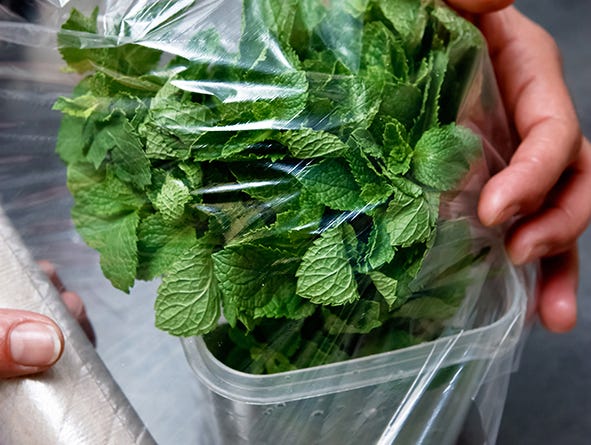Oregon-based market intelligence company Allied Market Research has released a new report titled, "World Bioplastics Market Opportunities and Forecast, 2014-2020," projecting that the global market for bioplastics would grow at compounded annual growth rate of 14.8% to become a USD 30.8 billion market by 2020.
November 23, 2015
Oregon-based market intelligence company Allied Market Research has released a new report titled, "World Bioplastics Market Opportunities and Forecast, 2014-2020," projecting that the global market for bioplastics would grow at compounded annual growth rate of 14.8% to become a USD 30.8 billion market by 2020.
According to the report, among the key factors propelling this growth are the rising environmental awareness among consumers and what it describes as the “substantial curiosity of packaging industries towards biodegradability,” which is responsible for the increasing adoption of bioplastics in rigid packaging applications. In fact, rigid plastic packaging applications are forecast to account for more than 40% of the market revenue by 2020.
 Bioplastics are plastics derived from biomass: renewable feedstocks, such as corn, sugarcane and cellulose to name but a few. Not only is there a wide availability of renewable feedstocks, part of what is boosting the market across the globe is the fact that biobased plastics feature a smaller carbon footprint compared to fossil-based materials, allowing users to meet their sustainability goals more easily. And, as a result of this greater market acceptance, biobased plastics are increasingly being adopted in new end user industries—in many cases, backed by government policies promoting the use of eco-friendly biobased and biodegradable products. On the negative side are the high production costs of bioplastics, which make them more costly to use. This so-called ‘green premium’ may well dampen market growth during the forecast period.
Bioplastics are plastics derived from biomass: renewable feedstocks, such as corn, sugarcane and cellulose to name but a few. Not only is there a wide availability of renewable feedstocks, part of what is boosting the market across the globe is the fact that biobased plastics feature a smaller carbon footprint compared to fossil-based materials, allowing users to meet their sustainability goals more easily. And, as a result of this greater market acceptance, biobased plastics are increasingly being adopted in new end user industries—in many cases, backed by government policies promoting the use of eco-friendly biobased and biodegradable products. On the negative side are the high production costs of bioplastics, which make them more costly to use. This so-called ‘green premium’ may well dampen market growth during the forecast period.
The consumption of ‘drop-in’ bioplastics (Bio-PE, Bio-PET 30, Bio-PA) and others, says the report, will continue to dominate the overall bioplastics market through 2020. Drop-in bioplastics are non-biodegradable materials, derived from renewable raw materials offering identical technical properties to their fossil counterparts (PE, PET and PA, among others).
Drop-ins offer a number of undeniable advantages: they are low-risk choices, as their technical properties and manufacturing processes are already familiar to the value chain; they require no investment in new machinery, nor are adjustments to existing processes needed, and they can be easily recycled in existing recycling streams.
According to this study, Bio-PET 30 will be the fastest growing segment in the non-biodegradable drop-in market, as it delivers same performance as conventional PET with regard to re-sealability, versatility, durability, appearance, weight and recyclability.
Key findings of the study are:
Rigid plastics are expected to be the fastest growing application segment, at a CAGR of 31.8%, during the forecast period.
Europe was the highest consumer, whereas Asia Pacific was the largest producer of bioplastics in 2014. Asia Pacific is predicted to become the fastest growing consumer during the forecast period.
Bio-PET 30 segment is expected to experience healthy volume growth at a 25.7% CAGR, during the forecast period.
Polyesters and starch blends segment collectively accounted for about one-third of the overall biodegradable bioplastic market in 2014.
PLA is projected to be the fastest growing segment in the overall biodegradable plastics market, in terms of revenue and volume.
North America and Europe collectively accounted for more than 60% of the market in 2014 and are expected to maintain their lead throughout the forecast period. European policy support for bioplastic manufacturers and increasing health awareness among consumers are the key factors responsible for the market growth within this region. However, Asia Pacific is projected to be the most lucrative market owing to availability of huge renewable feedstocks coupled with increasing investment made by the global bioplastics players.
The leading players in the market are adopting collaboration, partnership and expansion as the key developmental strategies. The prominent players profiled in this report include Novamont SPA, Metabolix Inc., BASF SE, Natureworks LLC, Corbion Purac, Braskem, Cardia Bioplastics, Biome Technologies Plc, FKuR Kunststoff GmbH and Innovia Films.
About the Author(s)
You May Also Like


